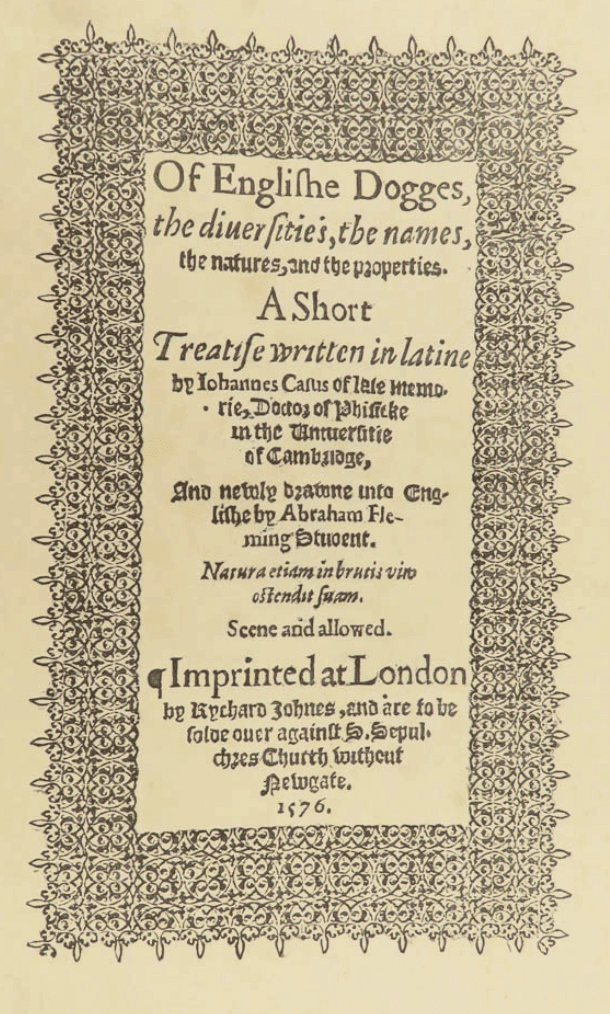De Canibus Britannicis 1570

15.10.2024Evelyn Ýr
John Caius (1510–1573) was an English physician, scholar, and founder of Gonville and Caius College at Cambridge. He was a well-known Renaissance humanist and authored De Canibus Britannicis.
De Canibus Britannicis, written in Latin in 1570, is one of the first works to systematically categorize British dog breeds, describing their types, roles, and characteristics. It provides insight into the use of dogs in Elizabethan England, including breeds for hunting, guarding, and companionship.
In a chapter on foreign dogs, he writes about Icelandic dogs:
„Externos aliquos & eos majusculos, Islandicos dico & Littuanicos, usus dudum recepit: quibus toto corpore hirtis, ob promissum longumque pilum, nec vultus est, nec figura corporis. Externa prælata. Multis tamen quòd peregrini sunt, & grati sunt, & in Melitæorum locum assumpti sunt: usque adeo deditum est humanum genus etiam sine ratione novitatibus. ἐρῶμεν ἀλλοτρίων, παρορῶμεν συγγενεῖς, miramur aliena, nostra non diligimus.“
"Some foreign dogs, particularly larger ones like Icelandic and Lithuanian, have long been used here. These dogs are entirely covered with hair, with long, flowing coats, and neither their face nor body shape is visible. Foreign dogs are favored. Because they are foreign, they are highly valued and have replaced the Maltese dogs, as humanity has a fondness for novelties, even without reason. We love what is foreign but neglect our own."
It seems that Icelandic dogs, with such thick coats that their head and body are hard to distinguish, were highly favored by the British aristocracy.
It is also worth noting again that William Shakespeare referenced the Icelandic dog in Henry V, written around 1600:
"Pish for thee, Iceland Dog! Thou prick-ear'd cur of Iceland!"
Contact
Lýtingsstaðir, 561 Varmahlíð.
+354 893 3817
[email protected]


